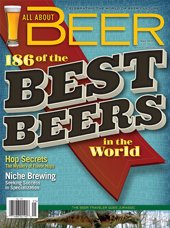The Search for Perfection
The watershed event that undeniably revolutionized brewing was the invention of the hot air kiln in 1817. The drum-like device allowed green malt to be dried indirectly with hot air instead of directly over a fire. It also allowed for very controlled heating, which allowed the maltster to make fairly pale grains to brew with. Gone was the dark, smoky product of yore. English brewers were the first to take advantage of the new kiln and began producing wonderfully clean, pale ales. Naturally these brews caught the eye of other brewers in Europe who craved a similar sparkling product.
Pale malt was brought to continental Europe by two famous brewers, Gabriel Sedlmayr of Spaten in Munich and Anton Dreher of the Dreher brewery in Vienna, after a trip to England in 1833. Sedlmayr’s amber lager beer, known as märzen, was introduced to the public in 1841 at the Munich Oktoberfest. His malt was known, of course, as Munich malt. Dreher produced his first pale beer, known as Vienna lager, that was even lighter in color than the märzen of Spaten. At the same time in Plzn, Bohemia, the Bavarian brewer, Josef Groll, was busy producing a golden lager with a yeast smuggled in from Bavaria. His brilliant gold pilsner lager, the lightest beer yet, was introduced to the public in 1842.
Pilsner, unmistakably the new king of beers, was hastily copied in some form all over Europe. The Franziskaner brewery, operated by Gabriel Sedlmayr’s brother, Joseph, introduced a pale lager to the Munich Oktoberfest in 1872 as a direct competitor to the Bohemian lagers. Finally, in 1894, Gabriel’s three sons produced a very pale lager that is today considered the first true helles lager. It was in keeping with Bavaria’s penchant for malty and modestly hopped brews, different from their pilsners.
Today, about half of the beer consumed in Bavaria is helles, rather impressive when one considers that there are several styles of beer that call Bavaria home: pilsner, bock, dunkel, märzen, and the resurgent weissbier among them. Munich is directly responsible for giving us both märzen and helles as new beer styles, while retaining its more traditional and refined dark beers.













